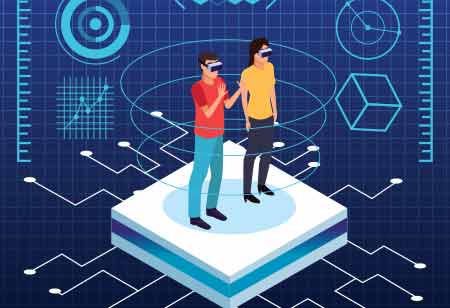THANK YOU FOR SUBSCRIBING

Cio & It Leaders As Responsible Leaders
Neeraj Grotra, Head Of Application Services, It & Global Business Transformation, Kinectrics

 Neeraj Grotra, Head Of Application Services, It & Global Business Transformation, Kinectrics
Neeraj Grotra, Head Of Application Services, It & Global Business Transformation, KinectricsLeadership and responsible leadership are two important concepts that every CIO and IT leader should understand. While leadership involves guiding and inspiring a team to achieve common goals, responsible leadership involves taking into consideration the impact of one’s actions on the organization and its stakeholders. As a CIO or IT leader, it’s not just about getting things done and meeting deadlines, but also about being accountable for the impact of the decisions you make and the solutions you implement. Responsible leadership in the context of IT involves taking into account the long-term effects of technology on the organization, its employees, customers, and the environment. It requires a deep understanding of the organization’s values, goals, and objectives, and aligning technology solutions with those objectives in a sustainable and ethical manner. With responsible leadership, the CIO and IT leader play a crucial role in creating a culture of trust and accountability, and in shaping the organization’s digital future
As a CIO in a highly regulated industry, it is important to recognize the critical role technology and information systems play in supporting responsible leadership practices. The following are key areas where CIOs and IT leaders can contribute to responsible leadership in their organizations:
Establish a Clear Definition of Responsible Leadership: Organizations should establish a clear definition of what responsible leadership means to them. This can include a set of principles and values that guide decision-making and behavior. CIOs and IT leaders can help facilitate this process by working with other senior leaders and stakeholders to ensure that technology and information systems are aligned with the organization’s definition of responsible leadership.
Lead by Example: As leaders, CIOs and IT leaders should model responsible leadership behaviors themselves. This includes adhering to ethical standards, acting with integrity, and promoting transparency in decision-making and communication. By doing so, CIOs and IT leaders can create a culture of responsible leadership within their teams and help set the tone for the entire organization.
Establish a Code of Conduct: Organizations should establish a code of conduct that outlines expectations for ethical and responsible behavior. CIOs and IT leaders can help ensure that technology and information systems support and reinforce the code of conduct by implementing policies and procedures that promote responsible behavior and prevent misconduct.
"As a CIO in a highly regulated industry, it is important to recognize the critical role technology and information systems play in supporting responsible leadership practices"
Foster a Culture of Transparency: Organizations should promote transparency in their operations, decision-making processes, and communication. CIOs and IT leaders can help facilitate this by implementing technologies and processes that promote open communication, enhance accountability, and allow for effective tracking and reporting of key metrics.
Encourage Employee Engagement: Organizations should foster a culture of employee engagement and empower employees to contribute to responsible leadership practices. CIOs and IT leaders can support this by implementing technologies that enable collaboration and communication between employees, and by providing training and development opportunities to help employees gain the skills and knowledge needed to contribute to responsible leadership.
Invest in Employee Development: Organizations should invest in the development and training of their employees to ensure that they have the skills and knowledge needed to support responsible leadership practices. CIOs and IT leaders can support this by implementing programs and initiatives that provide opportunities for employees to learn and grow, and by using technology to support employee development.
Promote Diversity and Inclusion: Organizations should strive to promote diversity and inclusion in their operations and decision-making processes. CIOs and IT leaders can support this by implementing technologies and processes that promote equal opportunity and prevent discrimination, and by working to create a workplace culture that values diversity and encourages inclusivity.
Embed Sustainability into Business Strategy: Organizations should embed sustainability into their business strategies to ensure that they are making a positive impact on the environment and communities they serve. CIOs and IT leaders can support this by implementing technologies and processes that promote sustainable practices, and by working with senior leaders to ensure that sustainability is integrated into the organization’s overall business strategy.
Foster a Culture of Innovation: Organizations should foster a culture of innovation to drive continuous improvement and support responsible leadership practices. CIOs and IT leaders can support this by implementing technologies and processes that encourage innovation, and by providing opportunities for employees to develop their creative and innovative skills.
Engage Stakeholders: Organizations should engage stakeholders, including customers, employees, partners, and communities, in their responsible leadership practices. CIOs and IT leaders can support this by implementing technologies and processes that promote stakeholder engagement and collaboration, and by working with senior leaders to ensure that stakeholders are effectively engaged in the organization’s responsible leadership practices.
In conclusion, as a CIO and IT leader in a highly regulated industry, you play a critical role in supporting responsible leadership practices in your organization. By establishing a clear definition of responsible leadership, leading by example, establishing a code of conduct, fostering a culture of transparency, encouraging employee engagement, investing in employee development, promoting diversity and inclusion, embedding sustainability into business strategy, fostering a culture of innovation, and engaging stakeholders, you can help ensure that your organization is operating in an ethical, responsible, and sustainable manner. The impact of technology and information systems on responsible leadership cannot be overstated, and as a CIO and IT leader, you have a unique opportunity to leverage these tools to drive positive change and support responsible leadership practices throughout your organization.
Read Also








-450x308_tK8s.jpg)













ON THE DECK